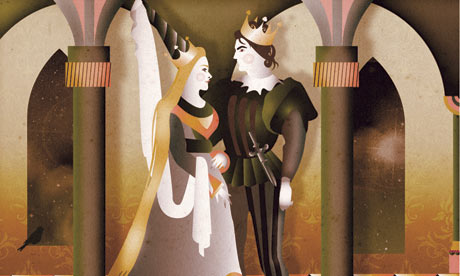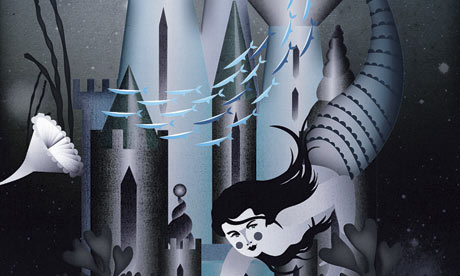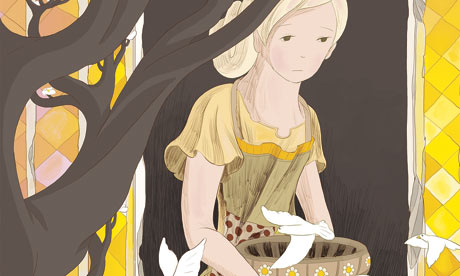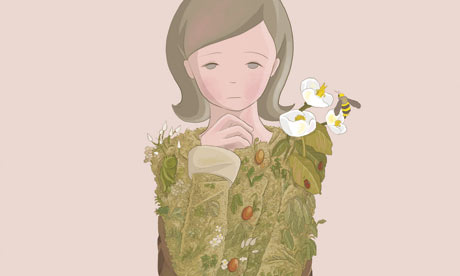
Today's fairy tale booklet (Day 3) at The Guardian is themed Love. You can read more about the seven part series at my previous post.
Love in fairytales: AS Byatt looks at the abstract world in Fairytales
Here's a lovely excerpt:
One of the pleasures of the tales is the brilliant mosaic they offer of isolated things and materials. Loaves of bread, magic swords, frying pans, spindles, necklaces, shoes. And these things have brilliant colours – the Swiss scholar Max Lüthi has remarked that they also have a restricted range – red, black, white, gold and silver. Materials shine – a glass mountain, golden coins spouting from the good daughter's lips. Materials contaminate – a bad daughter has slimy toads springing from her lips. Pitch defiles. Blood wells up and betrays crimes. Birds glitter and shimmer and sing significant songs. The animal world is a close extension of the human world – bears help (or devour), foxes and deer are helpers or punishers, fish speak from lakes and birds help in the sorting of seeds or peck out the eyes of the wicked. It is a mosaic world capable of endless retelling in varied ways.
The issue also includes three fairy tales to fit the theme:
The fairytale of Rapunzel by the Brothers Grimm
The fairytale of the Steadfast Tin Soldier by Hans Christian Andersen
The fairytale of the Little Mermaid by Hans Christian Andersen

The illustrations for this set are by Emily Forgot. They are once again lovely, but I am amused that so far the least "romantic" style of illustrations was used for the "Love" themed collection. Interesting juxtaposition...
Yesterday's issue, Day 2, was themed Rags to Riches.

Rags to Riches in fairytales: Philip Pullman looks at the power of symbolism in fairytales The fairytale of Mossycoat
Here's an excerpt from Pullman's essay:
Bettelheim's point is that fairytales such as this symbolise genuine aspects of our psychological life – moments of transition from innocence to knowledge, and so on – and that they are invaluable aids to a contented and healthy growth. Children need such tales as much as they need food, warmth, shelter and love. I think I agree with that. But whether or not they're psychologically necessary, the greatest tales (and Cinderella is one of the greatest of all) derive their lasting power not only from the multitude of fascinating and unforgettable details that abound in them but from the emotionally satisfying shape they take up. In the Grimms' collection, for example, tale after tale begins enthrallingly and then collapses half way through: rather like most films, most novels, most plays, in fact. The hardest thing with a story of any kind is to bring it to a conclusion that works every time you read it. The best of the Grimm tales do that, and the ones that work best of all are clearly the work of some ancient and anonymous teller of genius, whose power of shape-creation has resisted generations of hamfisted clumsiness and mishandling.
Once again, the issue includes three fairy tales to fit the theme:
The fairytale of Mossycoat, an English folk tale, retold by Philip Pullman
The fairytale of the Tinderbox by Hans Christian Andersen
The fairytale of Cinderella by Charles Perrault
The illustrations for this set are by Heisuke Kitazawa.

This is really quite exciting. It's especially nice to have a new Mossycoat on the internet....

Thank you for posting this lovely series.
ReplyDeleteThis retelling in particular was very enjoyable! Thanks so much for sharing this series!
ReplyDelete